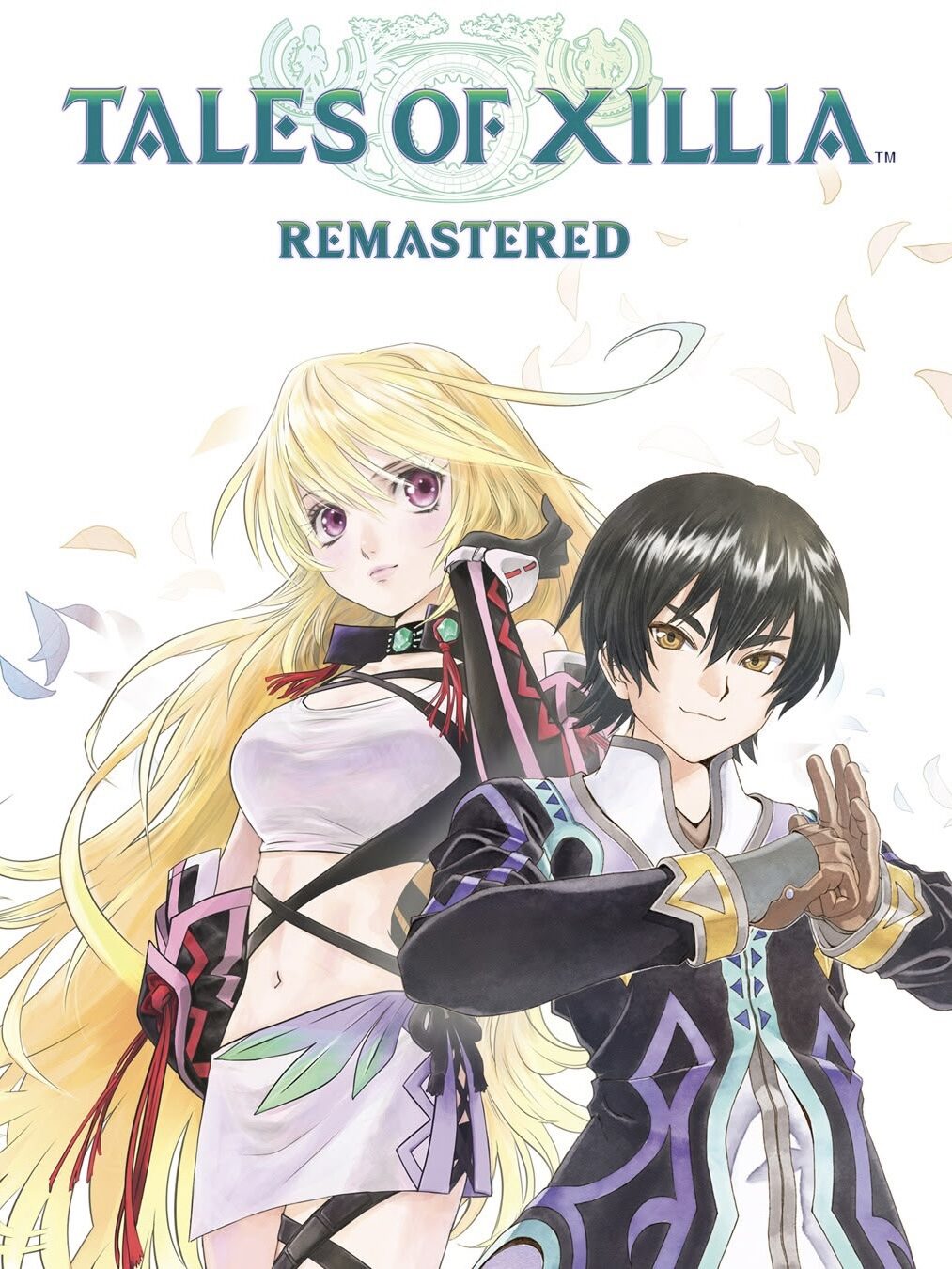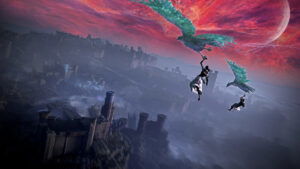In the current video game landscape of Remasters and Remakes, it’s an important distinction to know the difference between the two. A remake is when an entire title is reimagined from the ground up (think Silent Hill 2, or Final Fantasy VII), a remaster is basically a port to a new generation of consoles with fresh visual fidelity and quality of life improvements. Bandai announced The Tales of 30th Anniversary Remastered Project at the end of 2024, and their aim is to “bring previous Tales games to modern hardware and make them more accessible to a wider audience.”
The second game in this 30th anniversary celebration is a second title from the PlayStation 3 era of the Tales catalogue, Tales of Xillia, and it brings the entire experience (with included DLC outfits and items) mostly intact to this generation of consoles, with a few inclusions to make the experience faster for returning veterans. Tales of Xillia Remastered is a worthy and faithful port of the original PS3 title, and despite showing its age, it is an adventure worth taking for newcomers.

Tales of Xillia Remastered injects players into the world of Rieze Maxia, a land that exists due to the symbiotic relationship between humans and spirits, thanks to the mana that powers the world. The Human nations are at odds with one another, and the nation of Auj Oule are warring with the rest of Rieze Maxia to establish a united world by force.
“Tales of Xillia Remastered is a worthy and faithful port of the original PS3 title, and despite showing its age, it is an adventure worth taking for newcomers.”
During the strife in the world, a med-student, Jude Mathis, notices an unusually high number of patients suffering from injuries caused by failed Spirit Artes (the focus of spirit mana), and while in search of his lost teacher in a shady military facility, he runs into Milla Maxwell. This is the self-proclaimed human incarnation of the Lord of Spirits, and she holds the leash of the Four Great Spirits of Rieze Maxia.
After her spirits are stolen from her while attempting to destroy the Rieze Maxia version of the Atomic Bomb (referred to as the Lance of Kresnik), Jude and Milla adventure forth to recover the great spirits and stop the conflict between the warring nations once and for all. When beginning Tales of Xillia Remastered, you choose Jude or Milla as the main character, and it feels like a decision that doesn’t hold any weight.
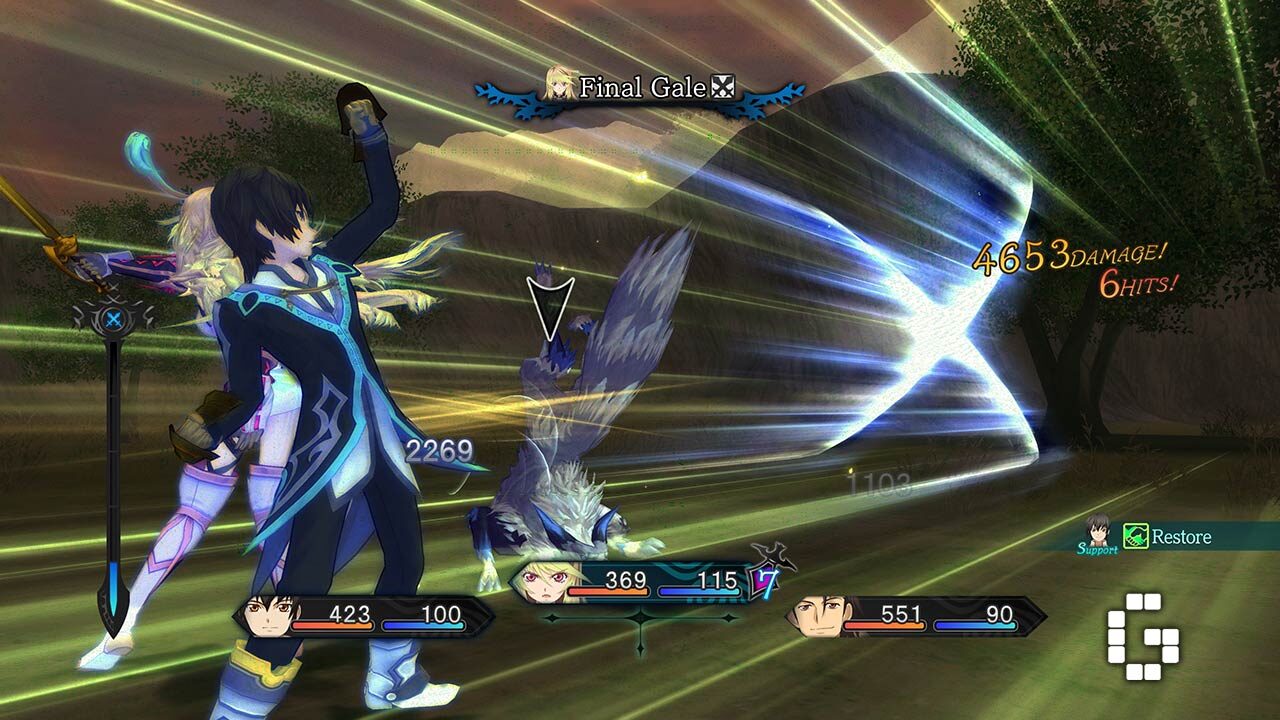
While a few instances of changed perspectives happen, the two main characters stay in the party for nearly the entire campaign, which makes this decision more for show than anything else. There are some hilarious moments where Milla’s ‘inhumane’ attitude glosses over a few of the more intense story beats, but these would only make sense if you have knowledge of the Jude side of things. If you’re new to Rieze Maxia, Jude may be a better option for a more fleshed-out story.
The cast of characters (like most other Tales of games) drives the story forward with solid pacing and fantastic interactions in the form of small animated skits. Milla’s aloof personality and Jude’s caring nature often conflict when speaking to the rest of the cast, which makes for hilarious banter between the party.
During these segments, Game Director Naoto Miyadera does a virtuous job relaying heavy context in these scenes without them becoming too overbearing, fleshing out the world and making the player feel like Rieze Maxia is ‘lived in.’

While all Tales titles do this impeccably, Xillia Remastered skits feel like must-views due to the political nature of the overarching continental conflict. Unfortunately, Tales of Xillia Remastered fumbles these segments a bit, and it often takes real-time minutes for these skits to trigger in town. This can become tiresome when you’re often left waiting for nothing else to occur.
“Tales of Xillia Remastered brings one of the best fighting systems in all of RPGs, not just the Tales series, back to this current generation of consoles and doesn’t skip a beat.”
What Tales of Xillia Remastered does better than nearly the entire Tales catalogue is bring its excellent battle system (which makes a faithful reappearance) to the Remaster. Tales of Xillia built upon the franchise’s signature Linear Motion Battle System, and innovates with the Dual Raid Linear Motion Battle System. This allowed me to enter a power trip mid-fight, and links two characters together for two-pronged attacks and support skills.
Often, I could link up with party members Milla and Alvin to dispense a beating on adversaries. Tales of Xillia Remastered NPCs move smartly and position themselves behind enemies if you’re positioned in front, and will often actually help in harder fights. In menus, you can also adjust their behaviour to using items at certain health points and use Artes at specified times. I wish I knew this before my party member Alvin used all my Orange Gels (think the Tales equivalent of the Ether item from Final Fantasy), but these mechanics work wonders in effect.
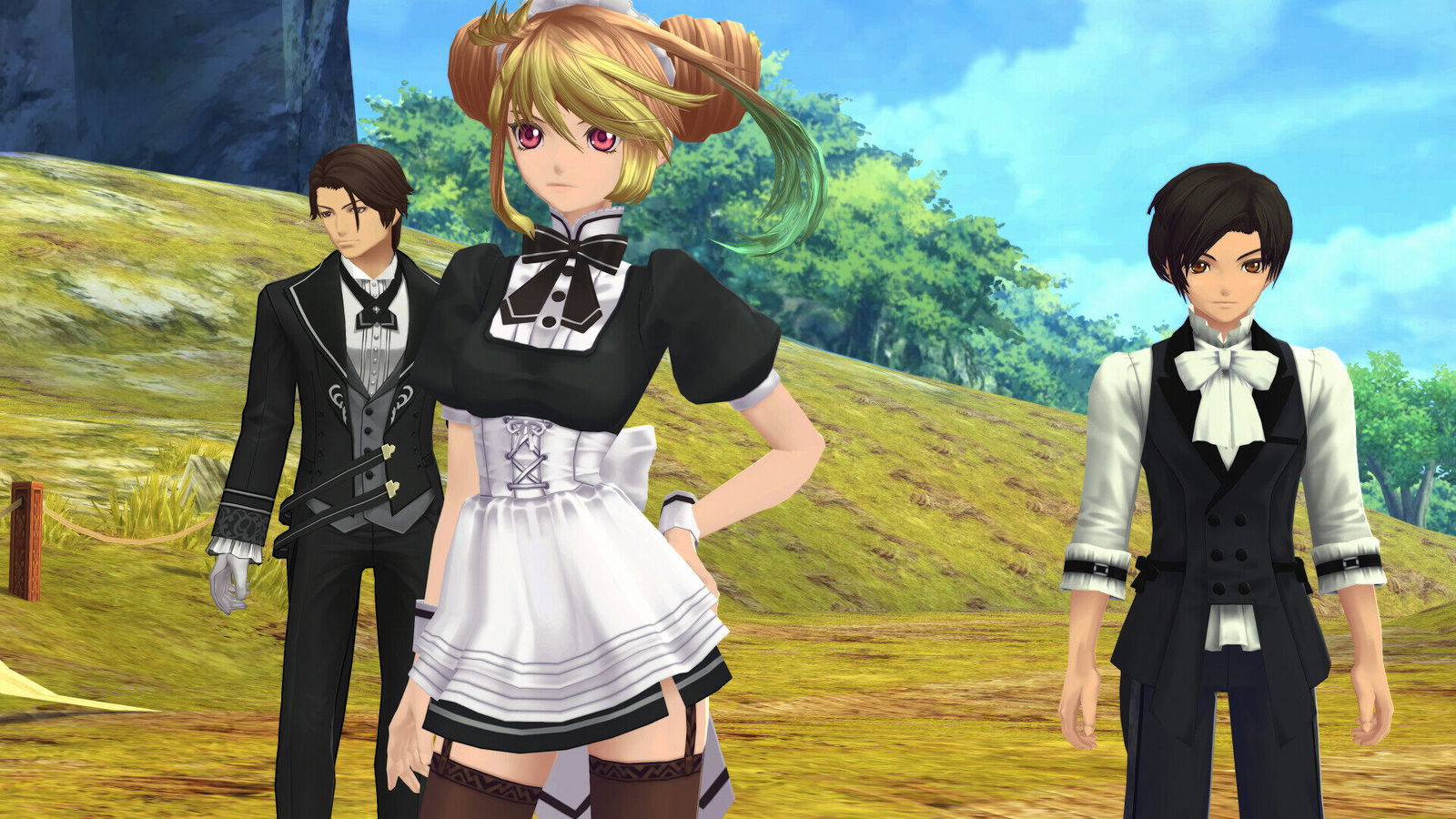
During a particularly hard boss fight, Milla would constantly position herself behind the sprawling monstrosity to hold its attention, which would allow for better pincer attacks between Jude and the other party members. Milla can even deploy the partner skill, Bind, to hold enemies in place allowing your other party members to T-off on them.
The biggest advantage in fights are two-character Link Artes, which deploy heavy hits to adversaries using a gauge. You can even link these two-character attacks together to deal massive damage. In one fight, I chained a sharp sword beam attack (Final Gale) into a big fiery explosion (Igneous Crush) for extensive damage. Once the gauge fills, you can spam these Link Artes until it depletes, which allows for serious strategy during more strenuous fights. Tales of Xillia Remastered brings one of the best fighting systems in all of RPGs, not just the Tales series, back to this current generation of consoles and doesn’t skip a beat.
There are a few quality-of-life improvements the Remastered version bestows on players. First off, it is no longer confusing knowing which way you’re going in game. A golden star appears on the hud and mini-map, letting the player know which way is proper to continue the story.
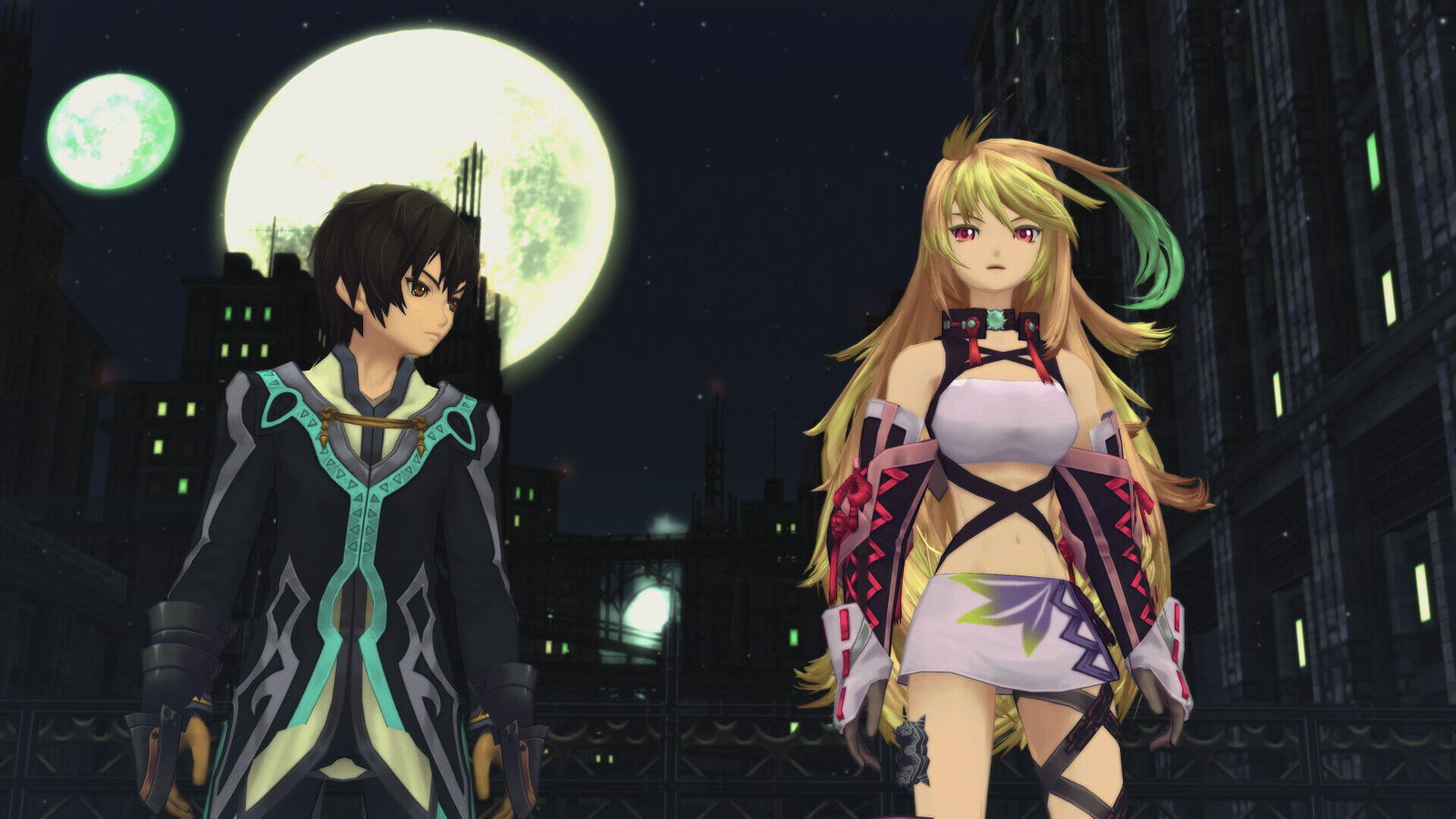
Second, the endgame Grade Shop —a shop loaded with buffs designed to give players a boost at the start of the game that was only accessible after finishing the story and entering New Game+ in the original— can be accessed from the beginning. Lastly, fans can turn off enemy encounters completely. It’s a little jarring running into enemy sprites and not triggering a battle, but it does work well when wanting to avoid a fight.
“There are a few quality-of-life improvements the Remastered version bestows on players.”
Despite the improvements, Tales of Xillia Remastered still has flaws. Aside from the wonky trigger for skit scenes, facial animations don’t look ‘Remastered’. Alvin is genuinely hard to look at. His facial patterns and expressions are frightening (not intentionally) and appear muddy where the rest of the game is concerned.
The bloated mid-game pacing from the original, unfortunately, carries over into the remaster and feels like a crucible of patience, especially with side quests that feel redundant or repetitive. Lastly, some voice lines are delivered questioningly and feel out of place in conversation, which can sometimes ruin immersion.

Tales of Xillia Remastered brings a phenomenal RPG to this current generation of consoles with an improved frame rate, improved visuals, and a myriad of quality-of-life improvements that help newcomers and veterans alike ease into the title’s systems. An addictive and highly strategic battle system glues a phenomenal narrative and a colourful cast of characters together symbiotically, adding genuinely funny conversations to an equation that equals a big win for RPG enthustiasts. Fans needed a way for fans to revisit or discover Rieze Maxia and now it has a good one with Tales of Xillia Remastered, issues and all.

